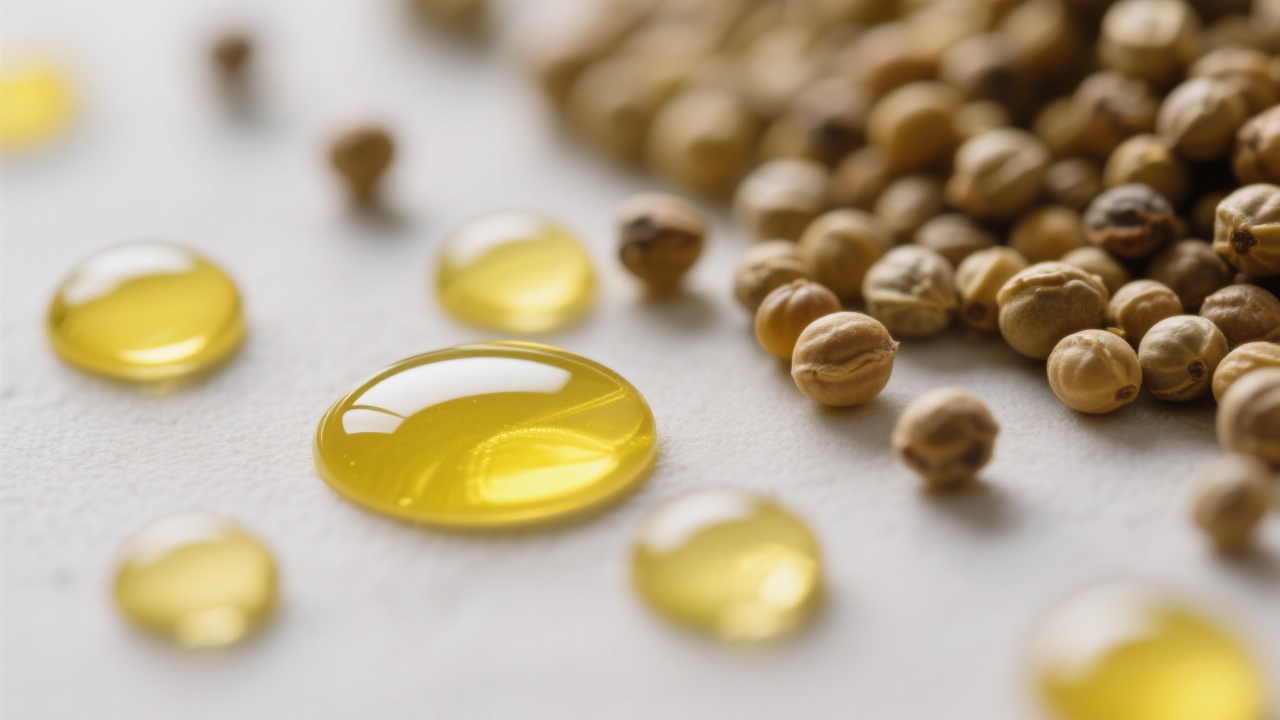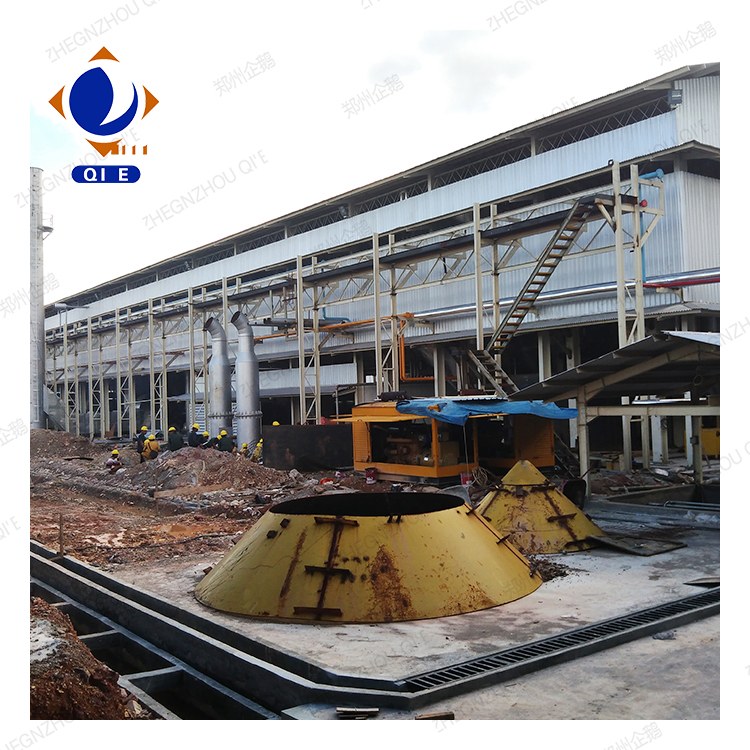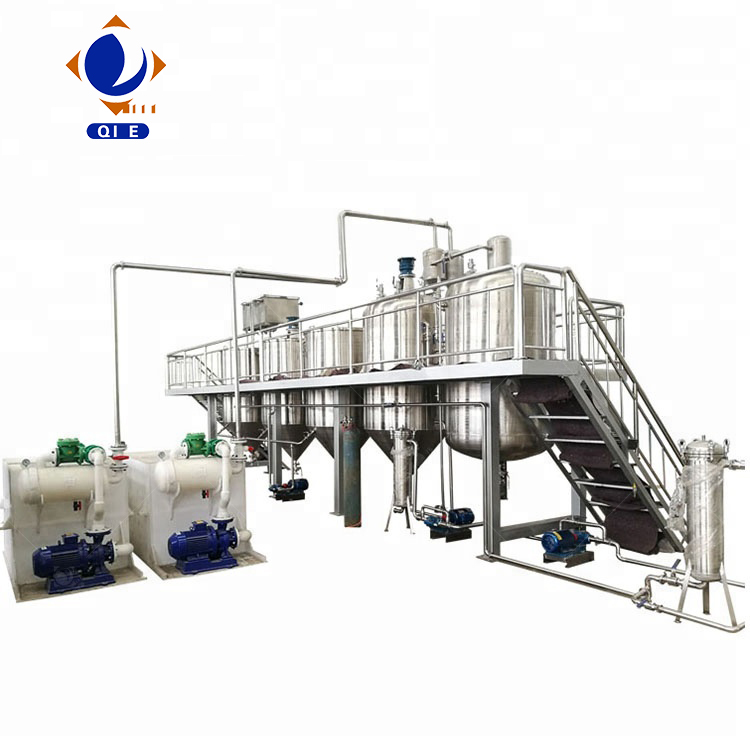
In the industrial production of vegetable oils, refining is a crucial process for ensuring product quality and meeting export compliance standards. This article provides a comprehensive guide to the key material selection for impurity removal and the daily maintenance of equipment in industrial vegetable oil refining.
The refining process of industrial vegetable oils typically consists of four main units: degumming, deacidification, decolorization, and deodorization. Each unit plays a unique and essential role in removing specific types of impurities.
Degumming is the first step in the refining process, aiming to remove phospholipids from the crude oil. Phospholipids can cause the oil to become cloudy and affect its stability. By adding water or acid, the phospholipids are hydrated and can be separated from the oil. For example, hydratable phospholipids can be removed by simply adding water, while non - hydratable phospholipids require the addition of citric acid or phosphoric acid.
Typical Process Parameter: In a well - controlled degumming process, the temperature is usually maintained at around 60 - 70°C, and the water or acid dosage is about 1 - 3% of the oil weight.

Deacidification is used to remove free fatty acids (FFAs) from the oil. High levels of FFAs can lead to an unpleasant taste and reduced shelf - life of the oil. There are two main methods for deacidification: chemical neutralization and physical refining. Chemical neutralization involves adding an alkaline solution to react with the FFAs to form soap, which can then be separated from the oil. Physical refining, on the other hand, uses steam distillation under high - temperature and low - pressure conditions to remove the FFAs.
Decolorization is mainly for removing pigments from the oil. Pigments such as carotenoids and chlorophyll can give the oil an undesirable color. Adsorbent materials like activated clay or activated carbon are commonly used in this process. These adsorbents have a large surface area and can adsorb the pigments effectively.
Deodorization is the final step in the refining process, which aims to remove odor - causing substances from the oil. By heating the oil under high - temperature and high - vacuum conditions, the volatile odor compounds are vaporized and removed. This process also helps to improve the oxidative stability of the oil.
Modern continuous refining lines have several technical advantages in terms of temperature control accuracy, vacuum environment optimization, and adsorbent material selection. Precise temperature control is crucial in each refining unit. For example, in deodorization, maintaining a stable temperature between 220 - 260°C can ensure efficient removal of odor substances without causing thermal degradation of the oil.
A well - controlled vacuum environment can also enhance the purification effect. In physical deacidification and deodorization, a high - vacuum condition (usually below 1 mbar) can lower the boiling point of the substances to be removed, reducing the energy consumption and improving the quality of the oil.
The scientific selection of adsorbent materials in decolorization can significantly affect the decolorization efficiency. Different types of activated clay or carbon have different adsorption capacities for various pigments. By choosing the appropriate adsorbent, the oil can achieve a better color and quality.

Through actual production cases and data comparison, we can see that different process combinations have specific impacts on key oil indicators such as color, smoke point, and oxidative stability. For example, a combination of chemical deacidification and decolorization with high - quality adsorbents can significantly improve the oil's color and reduce the content of FFAs, thereby increasing the smoke point and oxidative stability.
| Process Combination | Color (Lovibond Scale) | Smoke Point (°C) | Oxidative Stability (Hours) |
|---|---|---|---|
| Degumming + Chemical Deacidification + Decolorization + Deodorization | 2.0R + 10Y | 230 | 20 |
| Degumming + Physical Deacidification + Decolorization + Deodorization | 1.5R + 8Y | 240 | 25 |
Proper equipment maintenance is essential for the efficient and safe operation of the refining plant. Here are some practical maintenance tips:
The filter cloth in the filtration equipment should be replaced regularly. The replacement frequency depends on the type of oil and the impurity content. Generally, in a high - impurity crude oil refining process, the filter cloth may need to be replaced every 1 - 2 weeks.
Regularly check the seals of the equipment to ensure there are no leaks. A simple method is to use a soapy water solution to check for bubbles at the seal joints. If bubbles appear, it indicates a leak, and the seal should be repaired or replaced immediately.
Key components such as pumps, motors, and valves should be lubricated regularly. Use high - quality lubricants according to the manufacturer's recommendations to ensure smooth operation and extend the service life of the components.

Do you have similar problems in your factory? Share your experiences and challenges in the comments below. Choosing Qi'e Group can ensure that every drop of your oil meets global standards. Take the next step towards sustainable and high - quality production by clicking here.



